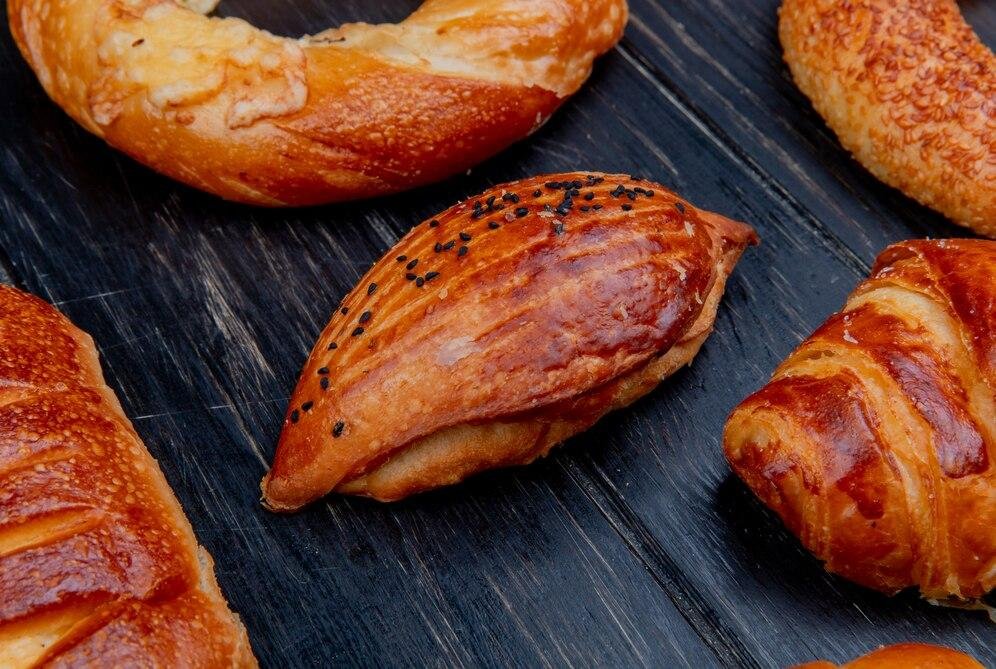Viennoiserie Market Battling Supply Chain and Labor Challenges

The viennoiserie market, known for its diverse range of buttery, flaky pastries like croissants, Danish pastries, and pain au chocolat, has shown resilience in the face of numerous challenges. Despite the growing demand for these indulgent treats, there are several hindrances that the market must overcome to continue its growth. These obstacles, ranging from supply chain disruptions and changing consumer habits to increasing competition and regulatory pressures, have the potential to stifle the market’s success. However, through innovation and adaptation, the viennoiserie market has demonstrated the ability to navigate and conquer these challenges.
1. Volatility of Raw Material Prices
One of the primary hindrances faced by the viennoiserie market is the volatility in the prices of raw materials, such as wheat, butter, and sugar. The fluctuations in the cost of these essential ingredients can lead to increased production costs for bakeries and manufacturers, forcing them to either absorb the costs or pass them on to consumers. In recent years, global disruptions—such as adverse weather conditions, supply chain bottlenecks, and geopolitical tensions—have caused instability in the agricultural sector, further complicating raw material procurement. With the growing demand for premium-quality viennoiserie, manufacturers must find ways to manage these price fluctuations without compromising on quality, a challenge that continues to impact profit margins.
2. Health-Conscious Consumer Trends
As consumers become more health-conscious and increasingly aware of the nutritional content of their food, they are opting for healthier alternatives to traditional viennoiserie. Pastries, often high in sugar, butter, and calories, are considered indulgent treats and are sometimes seen as contributing to weight gain and other health issues. This shift in consumer behavior presents a significant challenge for the viennoiserie market, as it must adapt to the growing demand for low-sugar, low-fat, gluten-free, and plant-based options. While healthier variants have been introduced, such as whole grain or reduced-fat croissants, consumer skepticism and hesitation to embrace these alternatives make it harder to fully transition without losing the essence of the product.
3. Increased Competition from Other Snacks and Pastries
The viennoiserie market is not only competing within its own category but also with a wide variety of alternative snack options and pastries. Consumers are increasingly drawn to a broader selection of baked goods such as muffins, cookies, and healthier protein-packed snacks. These alternatives, often marketed as more convenient or healthier, pose a direct challenge to viennoiserie products. Additionally, new trends in snacking, such as savory options like protein bars or exotic international pastries, add another layer of competition for the limited attention and disposable income of consumers. As the number of choices available to consumers grows, maintaining customer loyalty becomes more challenging for traditional viennoiserie producers.
4. Saturation in Established Markets
In many developed regions, particularly in Europe and North America, the viennoiserie market has reached a point of saturation. For decades, croissants and other viennoiserie items have been a staple of breakfast menus and snack offerings. However, the continuous growth of the market has plateaued in these regions, making it difficult for traditional bakeries and mass-market manufacturers to expand. While new flavors and variations may spark some interest, the basic product line has already been thoroughly established, and it is increasingly challenging to introduce something that feels fresh and innovative. This saturation often leads to price wars, making it harder for smaller brands to thrive, and for larger companies to maintain their profit margins.
5. Supply Chain Disruptions
Supply chain disruptions are a critical hindrance to the stability of the viennoiserie market. The intricate nature of the supply chain for viennoiserie—where multiple ingredients are sourced from different parts of the world—can be prone to delays and shortages. Events such as the COVID-19 pandemic, natural disasters, and trade conflicts have underscored how vulnerable global supply chains are. Shortages in essential ingredients like butter or flour can cause production delays and increase costs. These disruptions can also affect the consistency and quality of the final product, leading to consumer dissatisfaction. Ensuring a stable supply of high-quality ingredients remains a significant hurdle for producers aiming to maintain their market position.
6. Regulatory Challenges and Labeling Requirements
The regulatory landscape for food products, including baked goods, is becoming increasingly complex. Changes in food safety standards, nutritional labeling laws, and restrictions on certain ingredients can pose a challenge for viennoiserie manufacturers. For instance, many countries have implemented stricter regulations around the use of preservatives, artificial colorants, and trans fats in baked goods. These evolving regulations require manufacturers to invest in compliance, adapt recipes, or reformulate products, which can be costly and time-consuming. Additionally, the growing trend toward transparency in food labeling means that consumers are demanding more information about the sourcing of ingredients and the nutritional content of products. Companies that fail to meet these expectations may struggle to maintain consumer trust.
7. Environmental Concerns and Sustainability
Sustainability has become a key concern for both consumers and manufacturers, and the viennoiserie market is not immune to this trend. The production of viennoiserie items, particularly those made with high quantities of butter, flour, and sugar, has a significant environmental footprint. The agricultural practices used to produce these ingredients can lead to deforestation, excessive water usage, and greenhouse gas emissions. Consumers are increasingly seeking eco-friendly products, and the pressure on businesses to adopt sustainable practices is mounting. Manufacturers are responding by sourcing ingredients sustainably, reducing waste, and exploring more environmentally friendly packaging options. However, these practices often come with higher costs, which can affect the pricing and profitability of products.
8. Labor Shortages and Rising Costs
The ongoing challenge of labor shortages in the foodservice and manufacturing sectors is another barrier to the growth of the viennoiserie market. Skilled labor is essential for producing high-quality pastries, as many viennoiserie items require a high level of craftsmanship. However, many regions are experiencing a shortage of workers, particularly in hospitality and manufacturing industries. Rising wages and benefits, while necessary for attracting workers, can drive up production costs. For artisanal bakeries, which rely heavily on skilled bakers, this can pose a significant challenge in maintaining quality and profitability. The rising costs of labor can also contribute to higher prices for consumers, further limiting market growth.
9. Changing Consumer Preferences
As consumer preferences shift, traditional viennoiserie products face increasing pressure to adapt. The rise of global cuisines, local bakery trends, and the growing preference for plant-based or dietary-specific products all play a role in shaping consumer tastes. Additionally, many younger consumers are looking for more exciting and diverse flavor experiences, pushing traditional pastries to compete with more innovative or exotic alternatives. As a result, the market is seeing a gradual shift toward more experimental flavors, but not all of these new offerings have been embraced by the traditional consumer base. Striking a balance between tradition and innovation remains a key challenge.
10. Increasing Price Sensitivity
As economic uncertainty grows and inflation affects household budgets, consumers are becoming more price-sensitive, opting for budget-friendly options over premium-priced products. For viennoiserie manufacturers, this means they must reconsider their pricing strategies, especially in highly competitive markets where consumers have multiple low-cost alternatives. The high production costs associated with premium-quality viennoiserie, particularly those using organic ingredients or artisanal methods, can make it difficult to compete on price. As a result, there may be increased pressure on manufacturers to scale back on quality or innovate with more affordable alternatives.
Conclusion
The viennoiserie market faces numerous hindrances, from economic pressures and changing consumer preferences to supply chain challenges and regulatory obstacles. However, through innovation, adaptability, and a focus on consumer trends such as sustainability and health-consciousness, the market has the potential to overcome these barriers. As the industry continues to evolve, staying attuned to these challenges will be crucial for manufacturers seeking to maintain their market share and ensure long-term growth.





